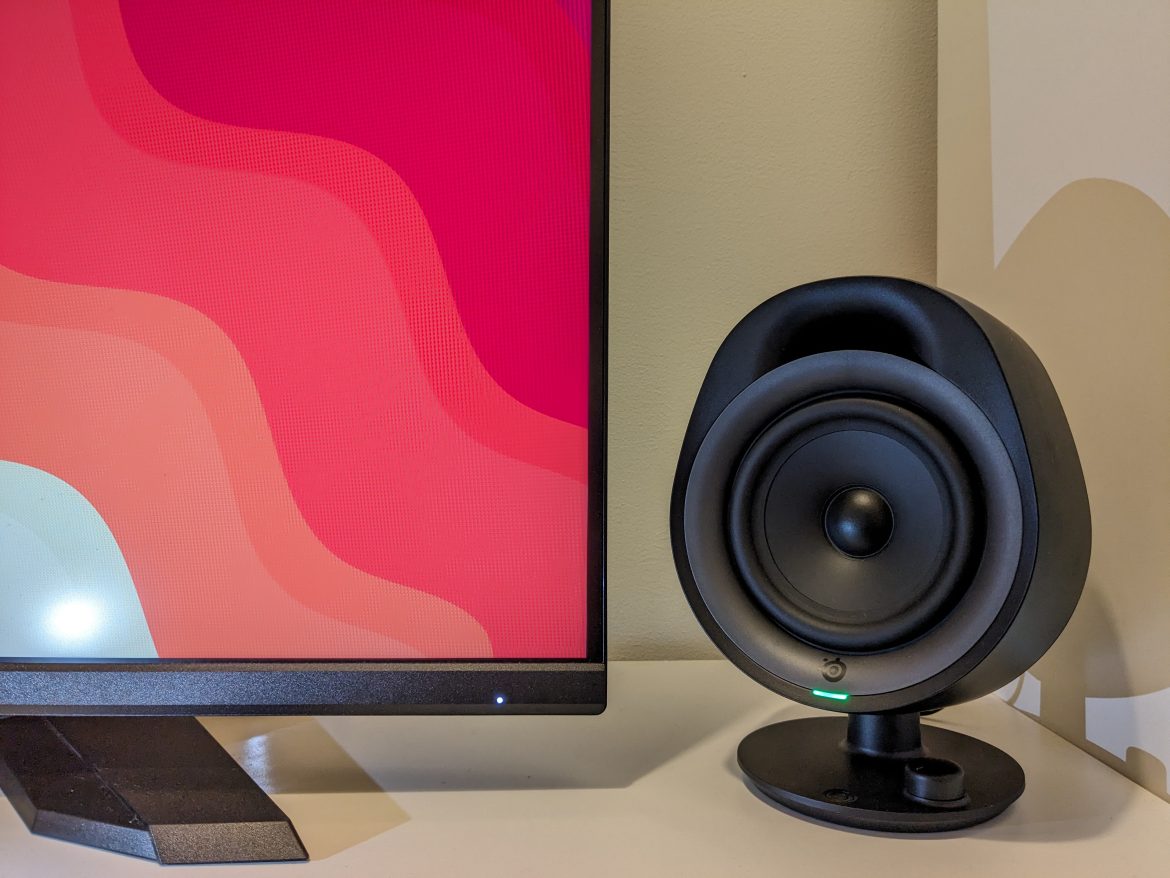TL;DR
Can't fit a bulky subwoofer but still crave better desktop audio? Steelseries Arena 3 might be your answer. These surprisingly substantial speakers ditch the sub, focusing on a clean, understated design and clear midrange for gaming and vocals. While they won't shake the room with bass, they offer a surprisingly detailed soundstage and ample volume, making them a solid upgrade from laptop speakers. Discover if this compact, stylish system is the right audio solution for your space. Read the full review to find out!
Numerous speakers are designed for desktop use, and many now include subwoofers to enhance the low-end frequencies of your media. However, a separate subwoofer isn’t always feasible or desired due to space constraints. But is a subwoofer truly essential for enjoying high-quality audio? This review examines the Steelseries Arena 3 to address that question. The Arena 3 represents Steelseries’ most compact speaker system and the only model in their lineup without a dedicated subwoofer.
Steelseries Arena 3
The package contains two speakers, a power adapter, and a 3.5 mm audio cable. The right speaker houses the volume control, a mute button, and all connection ports. The Steelseries Arena 3 supports both Bluetooth and wired connectivity, and a headset can be conveniently connected directly to the speaker. Upon unboxing, the speakers appear surprisingly substantial. They have a larger physical presence than suggested by product images. To provide context, our test setup includes a 32-inch monitor. To compensate for the absence of a dedicated subwoofer, the speaker drivers are notably sized at 4 inches.
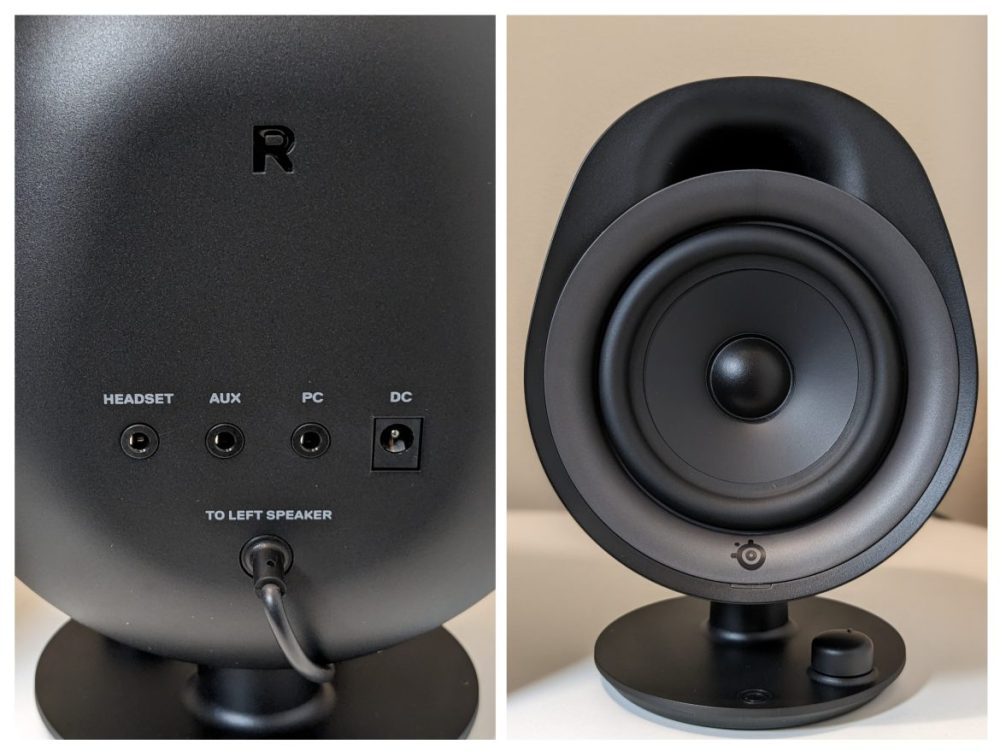
Design
Steelseries adheres to its established design principles, targeting gamers who prefer understated aesthetics devoid of excessive colors, lights, or overly stylized designs. The Arena 3 avoids the extremes of being a plain, boxy design, while also steering clear of overtly “cyborg-inspired” aesthetics (a nod to the Razer Nommo Pro). The Arena 3 features a predominantly matte black finish with subtle gray accents. Constructed from plastic, the speakers exude a robust and refined feel. Their shape is reminiscent of Henrik Thor Larsen’s egg-shaped Ovalia armchair from 1968, offering a distinctive design in a market often saturated with conventional boxes. The speaker’s design also allows for vertical tilt adjustment via their base, optimizing the sound direction towards the listener. Conventional square speakers typically require a stand to achieve similar positioning. However, the rounded design precludes horizontal placement, which may be a limitation for users with constrained space under their monitor.
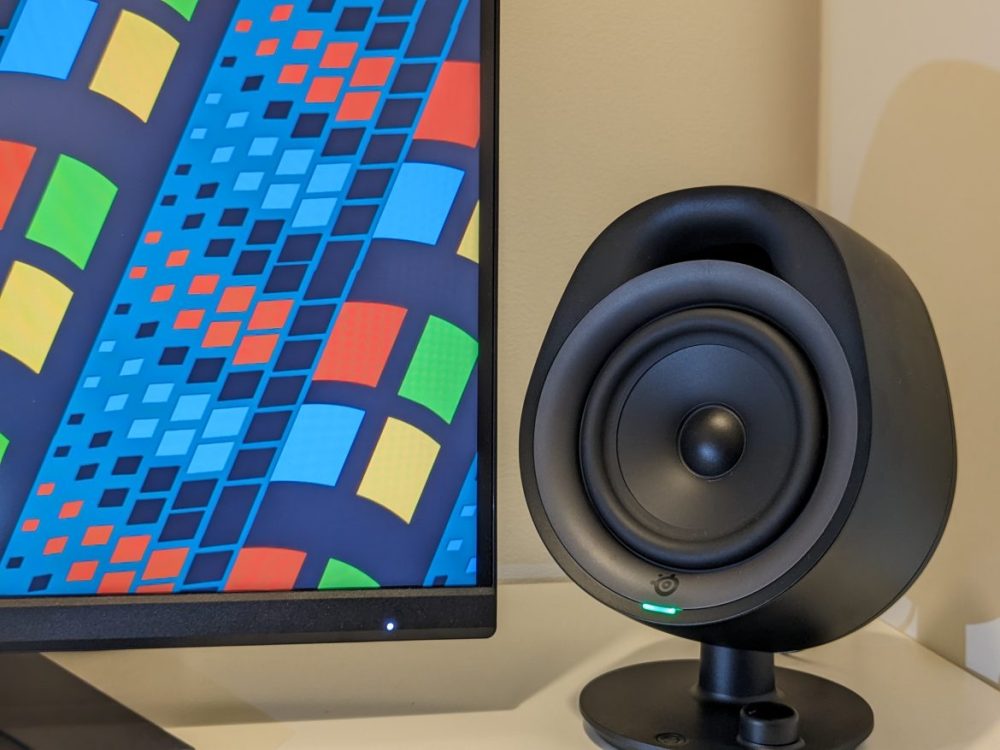
Sound
Beyond aesthetics, the crucial aspect is audio performance. The Arena 3 does not deliver room-shaking bass. The impact of this limitation varies depending on the music genre. The absence of deep bass is particularly noticeable in bass-heavy pop tracks like Hot N Cold by Katy Perry, resulting in a somewhat tinny sound. Conversely, Billie Eilish‘s Bad Guy exhibits surprisingly adequate bass response. Shifting to a different genre and era, Under Pressure by Queen also fares well in the bass department. The Arena 3 truly shines with acoustic music featuring string instruments and vocals. In both Bruce Springsteen‘s Paradise and Anne Sofie von Otter‘s Baby Plays Around, the vocal performances are exceptionally detailed and immersive. Subtle vocal nuances are clearly discernible. However, with more complex compositions like Hans Zimmer‘s Interstellar soundtrack, which involves frequent shifts between bass, midrange, and treble, the sound can become somewhat muddled, making it difficult to distinguish individual sonic elements. The somewhat limited bass response also tends to be sluggish, impacting the clarity of other frequencies. Achieving optimal audio quality often necessitates equalization adjustments, which may not be practical for casual listening.
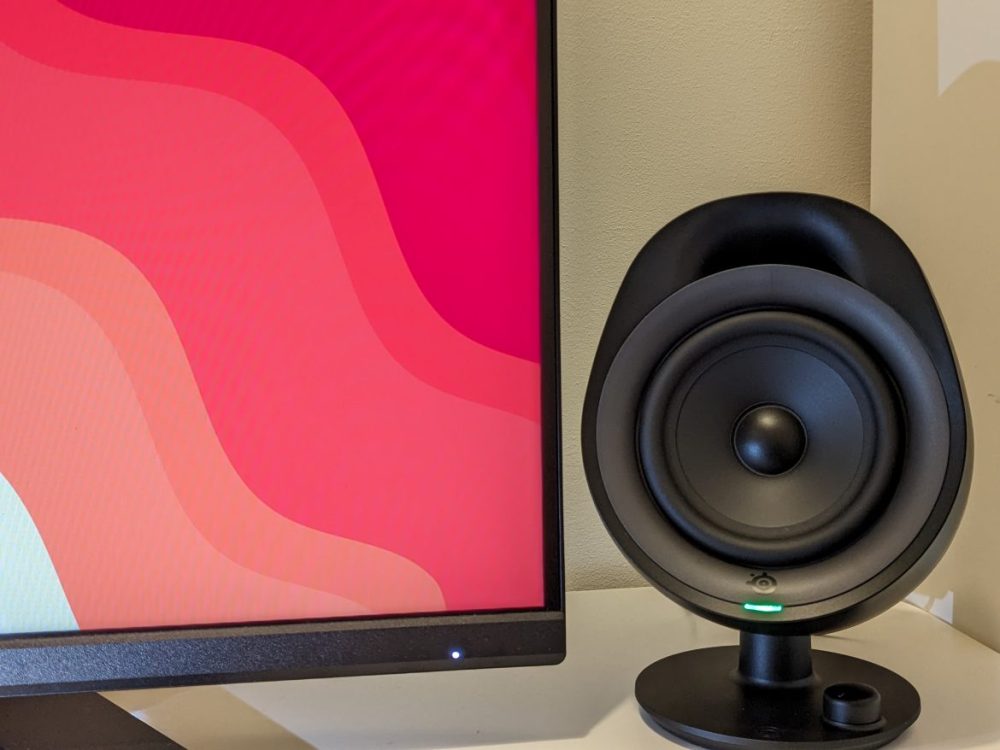
Gaming
The soundstage capabilities of the Arena 3 proved surprisingly impressive, exceeding the performance of a legacy 2.1 system previously used for testing. Despite being a two-channel system, accurately locating individual instruments in music or enemy footsteps in games presented no issues. The Arena 3’s emphasis on the midrange frequencies, critical for game audio, reinforces its target audience of gamers, which aligns with SteelSeries’ focus as a gaming accessory manufacturer. While not delivering powerful explosions, the speakers reproduce dialogue, gunfire, and footsteps with clarity. The volume output is ample, effortlessly filling a relatively small test office at approximately 70% of the maximum level without introducing distortion.
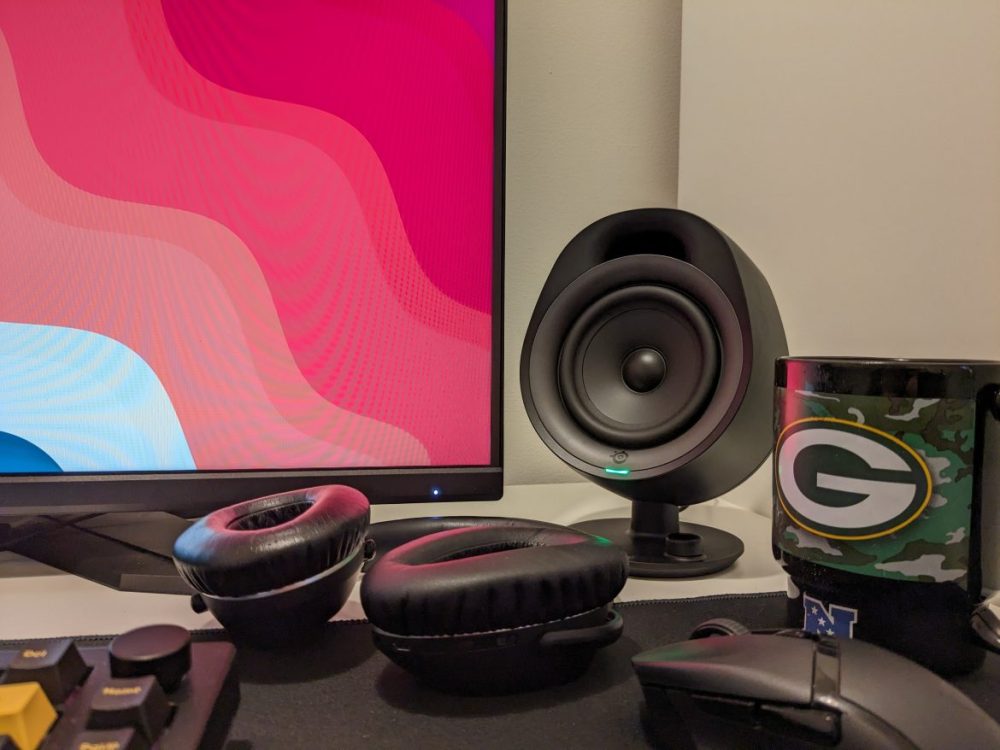
Conclusion – SteelSeries Arena 3
The Steelseries Arena 3 is best suited for users who desire an upgrade from built-in laptop speakers but lack the space or inclination for a separate subwoofer, and who don’t prioritize deep bass response or complex music reproduction. For this demographic, the Arena 3 offers a stylish and versatile solution that performs adequately across various applications without excelling in any single area, all at a competitive price point.
Steelseries provided review units for this evaluation. The provision of review materials does not influence our editorial independence; our reviews are conducted independently with a focus on the needs of our readers and consumers.
